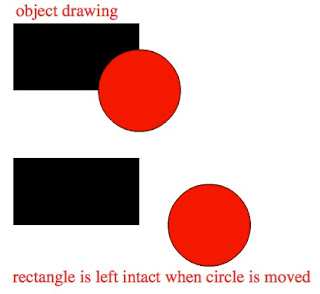Drew Clausing | silent chatter
Followers
Friday, November 19, 2010
Sunday, October 24, 2010
W4 Reading

The Value of Self-Reflection
This article gives us some strategies for self-reflection as well as evidence supporting the need to self-reflect.
Helping your children develop self confidence
This article suggests that confidence issues with adults stem from confidence issues developed during childhood. Its solution is to focus on this issue at an early age and find success and build confidence in children from the beginning.
Ask: Parent & Child
This is an article of questions and answers from the magazine “Parent & Child”. During this Q & A, some questions ask about children who seem to “forget things he or she has mastered”. The article suggests other factors that can cause children to seemingly forget things.
Building Self-Confidence in Children with Self-Esteem Activities
This article suggests differences in language used when try to modify behavior. Instead of saying, “No! Don’t do that”, say, “I like it better the way you did this.”
PE 6 - Flash | Vector Images
Vector images are made of mathematical formulas. When enlarged, the mathematical formula is simply multiplied, thus the quality remains perfectly crisp.
 A typical photo image (BMP) is made of pixels that are like little squares. When a BMP isenlarged, the original pixel shapes remain and the final product is a photo composed of large squares.
A typical photo image (BMP) is made of pixels that are like little squares. When a BMP isenlarged, the original pixel shapes remain and the final product is a photo composed of large squares.
Flash has a neat tool called vector trace that allows you to create a vector image out of a standard BMP image. The only real drawback is that these formulas can become very complex when lots of colors are used. So keep it simple and you’ll get something like this:
original

vector

Now the vector image looks a little funny because I had to scale down the colors to make it less complex. But the benefit of a vector image is that I could make this image the size of the moon and it would lose ZERO resolution. In other words, it would look exactly as it does now rather than have a bunch of little squares.
Friday, October 22, 2010
PE 5 - Flash | Paint Modes
Wow... I’ve definitely got a long row to hoe. I’ve watched an hour of video and I’m still learning all the paint tools. When am I going to learn about animation and game creation!!!?
So here’s the latest thing I learned. There are a few types of painting that up until now, I was unaware of. They’re each pretty neat in their own way.
Paint Mode lets you paint like normal:

Paint inside mode allows you to essentially “scribble” on an object, but the only paint that remains when you let go of the cursor, is the paint that is inside of the object. Everything else falls into the abyss.

Paint outside mode is the same thing except on the outside of the object. This is useful when you want to make sure your paint doesn’t stray onto something you don’t want it to.

Thursday, October 21, 2010
PE 4 - Flash | Merge drawing vs. Object drawing
Object drawing mode allows you to move objects around on different layers. If an object overlaps another object, each individual object is left unaffected.

Merge drawing mode uses a shape’s o
utline as a way to sort of "smart erase” the object behind it. In other words, if I placed a circle over a square in merge drawing mode, a circle shape would be eliminated from the square if I moved the circle away from the square.

Sunday, October 17, 2010
W3 Reading
A FURTHER TEST OF A MODEL OF SELF-REFLECTION WITH CHILDREN AGES 10 AND 11 - Journal of Constructivist Psychology
This study focuses on 10 and 11 year old children diagnosed with bipolar disorder and how self-reflection differs between them and adults with similar disorders.
Eide Neurolearning Blog: Direct and Reflected Self-Reflection
This article reflects on the two different directions for self reflection; what do I think of me, and what do I think others think of me.
Self-Reflection and Shared Reflection as Professional Tools - Head Start
This paper is mainly directed toward educators and adults. It answers the importance of self-reflection of teachers and how it benefits the children they teach.
Self-Reflection
This website focuses on the self-reflection an inclusionary school must make in order to succesfully understand how best to meet students needs.
This study focuses on 10 and 11 year old children diagnosed with bipolar disorder and how self-reflection differs between them and adults with similar disorders.
Eide Neurolearning Blog: Direct and Reflected Self-Reflection
This article reflects on the two different directions for self reflection; what do I think of me, and what do I think others think of me.
Self-Reflection and Shared Reflection as Professional Tools - Head Start
This paper is mainly directed toward educators and adults. It answers the importance of self-reflection of teachers and how it benefits the children they teach.
Self-Reflection
This website focuses on the self-reflection an inclusionary school must make in order to succesfully understand how best to meet students needs.
Subscribe to:
Posts (Atom)